#open acess journals
Explore tagged Tumblr posts
Text
Obesity in Obstetrics
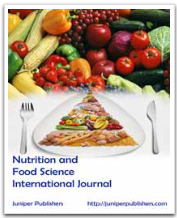
Mini review
The people in industrialized countries have experienced a dramatic increase in obesity in recent times. Prevalence of obesity has doubled in the last 25 years. In the United States, 17-th on the list of most obese places in the world - average BMI 28.8 Kg/m2, more than 60% of reproductive-age women are overweight and 35% are obese, representing a 70% increase in pre-pregnancy obesity. In Romania, 75th on the list- average BMI is 22.2 Kg/m2, the lowest average BMI in the European Union (9.4% obesity in 2016). [1] One of three Romanians is overweight, and one of four is obese. There are over 3.5 million obese in Romania. The highest obesity rate is recorded in Moldova, where the percentage is 23.8%. Only 10% of them see a doctor. Only one percent are included in a national obesity education program [2].
Not all ethnic groups are at equal risk. Of particular concern is the rapid increase in adolescent overweight and obesity. Concordantly, pregnancy obesity rates are also increasing. Obesity is associated with increased morbidity and 6- to 12-fold increase in mortality. Obesity is highly complex in terms of etiology and prevalence. Genetic predisposition, race, socioeconomic status, built environment (e.g., the presence of sidewalks or community design), accessibility of healthy and affordable foods, sleep habits, and geographic region all play a role. Lifestyle changes, which include consuming foods and beverages with a high glycemic index, increased food portion sizes, decreased structured physical activity, and increased screen-based sedentary behavior, have influenced the prevalence of obesity.
Antenatal Monitoring
An evaluation of dietary intake and exercise habits can provide insight into women at risk. All pregnant women without contraindications should participate in regular exercise. During prenatal visits women should be questioned and advised about their diet and exercise habits. Where available, nutritional counselling can be a helpful adjunct for women not meeting the weight gain recommendations.
The sonographer’s ability to evaluate fetal structures is largely dependent on maternal size. Approximately 15% of normally visible structures will be sub optimally seen in women with a BMI above the 90th percentile. In women with a BMI above the 97.5th percentile, only 63% of structures are well visualized. Obstetric care providers should take BMI into consideration when arranging for fetal anatomic assessment in the second trimester. Anatomic assessment at 20 to 22 weeks may be a better choice for the obese pregnant patient.
Use all available technical tools improving image quality in obesity: lower transducer emission frequencies; harmonic imaging; compound imaging; speckle reduction filters. Consider approaching the fetus through the four major abdominal areas with least subcutaneous fat: periumbilical area, suprapubic area, right and left iliac fossae. Consider using the transvaginal approach for the assessment of the central nervous system (CNS) in fetuses in vertex presentation.
Gently inform the patient and her partner that obesity will reduce the diagnostic accuracy of the scan. Consider including the BMI value among the demographic data in the report to document the presence or absence of maternal obesity. Report other cofactors of limited acoustic window, such as previous cesarean section (for the scar), twinning and myomata.
Pregnancy Complications
The risk of spontaneous abortion is increased in obese women. Lashen et al. identified an odds ratio for spontaneous abortion of 1.2 (95% CI 1.01 to 1.46) for obese women (BMI > 30 kg/m2). The authors also identified an increased risk of recurrent early miscarriages (more than 3 successive miscarriages < 12 weeks’ gestation) in the obese population, odds ratio 3.5 (95% CI 1.03to 12.01).[8] Similar risks have been identified in obese women undergoing in vitro fertilization treatment [3].
Pre-gestational diabetes is more prevalent in obese women. Therefore, testing during early in pregnancy for women with risk factors is recommended. Obese women are also at increased risk of developing gestational diabetes (GDM). Not surprisingly, obese women are also at increased risk of having a macrosomic child. Physical activity is inexpensive and can significantly reduce the risk of gestational diabetes. More relevant to the obese population, they also reported a 34% reduction in the development of gestational diabetes in women who did not participate in vigorous exercise but who did participate in brisk walking compared with those who participated in easy pace walking. Women with GDM have a 30% chance of developing type 2 diabetes later in life [4].
Intrapartum Complications and Management
Macrosomia and shoulder dystocia
The use of antenatal ultrasound to detect fetal macrosomia is associated with such obstetric interventions as labor induction and cesarean section. The rate of cesarean section is affected. Higher cesarean section is more frequent when ultrasound examination indicates a macrosomic fetus.
Fetal monitoring
The obese abdominal wall may make monitoring more difficult than in other cases, and of course, the positive predictive value of antenatal testing (e.g. cardiotocography, nonstress testing, biophysical profile assessment) is limited. There is no evidence to support the routine use of internal fetal monitoring in this population, but it may be more effective in some women. Monitoring contractions and ensuring adequate labor in obese women poses a special challenge. Obese women require more oxytocin in labor. Consider allowing longer first stage of labor before performing a cesarean for labor arrest. Although most obstetric care providers rely on manual palpation and/or external tocometry, the use of an intrauterine pressure catheter may be advantageous in some cases.
Cesarean section
The risk of cesarean section is increased in the obese parturient. The increase in cesarean section rate may be partly due to the fact that overweight and obese nulliparous women have a slower progression of the first stage of labor. When faced with lack of descent in the second stage of labor, some practitioners may opt for cesarean section rather than operative vaginal delivery because of concerns about fetal macrosomia and shoulder dystocia. This may explain the low rate of operative vaginal delivery in some series [5]. Obese women undergoing caesarean section experience more complications, including blood loss > 1000 mL, increased operative time, increased postoperative wound infection and endometritis, and need for vertical skin incision. The obese diabetic women who undergo cesarean section have an odds ratio for postoperative wound infection of 9.3 (95% CI 4.5 to 19.2), and those who require a vertical skin incision have a 12% rate of wound complication serious enough to require opening the incision [6].
For morbidly obese patients, two standard 50-cm-width operating tables secured together may be necessary. Specially constructed wider operating tables would be ideal. Weighing scales suited for obese patients are necessary not only to measure weight and evaluate weight gain during pregnancy, but also for calculating medication dosages. A wider delivery bed that is easy to move around and that may be used at all stages of delivery, including cesarean section, without the need to move the patient into another bed is most useful. Nursing care of obese patients requires ergonomic adaptation and knowledge about the special risks involved in caring for these patients. More trained nurses are necessary to care for morbidly obese patients.
The decision-to-delivery interval may be longer when an emergent or urgent cesarean section is required in obese parturient. Causes for this delay may include patient transport and bed transfer, the time to establish adequate anesthesia, and the operative time from incision to delivery. The 30-minute rule of emergency cesarean section is an arbitrary threshold rather than an evidence-based standard.
Vaginal birth after cesarean section
In the absence of contraindications, women who have had their first child by cesarean section are asked to consider vaginal birth in subsequent pregnancies. The success of vaginal birth after cesarean section is commonly quoted at 80% [7]. Obese women are less likely than their lean peers to be successful in delivering vaginally after previous cesarean section (VBAC). In women with a BMI > 29 kg/m2 the success rate is 54% to 68% [8]. The success rate is further reduced in even heavier women. Chauhan et al. found a 13% VBAC success rate in women >300 lbs (136 kg) [9].
Thromboembolism
The risk of thromboembolism is high in obese parturients. Edwards et al. reported 683 obese women (BMI > 29 kg/m2) who were matched to 660 normal weight women (BMI 19.8 to 26.0 kg/m2). The incidence of thromboembolism was 2.5% in the obese women, and only 0.6% in the controls.[29] BMI >30 plus one additional risk factor qualify for seven days of postpartum Clexane; BMI >30 plus two additional risk factors require Clexane antenatally and for 6 weeks postpartum; BMI>40 should be regarded as already having two risk factors. Clexane dosage should be calculated by weight:
Early mobilization and T.E.D. anti-embolism stockings are clinically proven to reduce the incidence of deep vein thrombosis by up to 50% and to promote increased blood flow velocity in the legs 138% of baseline by compression of the deep venous system.
Perinatal outcomes
Maternal obesity is also an established risk factor for stillbirth. The reported risk of stillbirth is 2-5 times higher in obese compared with normal-weight women. The risk of stillbirth associated with obesity increases with gestational age. Infant mortality rates increase from 2.4/1000 among normal weight women (BMI 18.5-24.9) to 5.8/1000 among women with grade 3 obesity (BMI ≥ 40.0). Maternal overweight and obesity are associated with increased risks of infant mortality due to increased mortality risk in term births and an increased prevalence of preterm births. Maternal obesity may increase the risk for intellectual disability or cognitive deficits in offspring from 1.3- to 3.6-fold. Maternal prepregnancy obesity and high gestational weight gain of > 18 kg was associated with a 3-fold increase in offspring IQ deficit (mean of 6.5 points lower) [10]. The majority of studies that have examined a link between high maternal BMI and childhood diagnosis of autism spectrum disorders have found a significant positive association. This risk may be further augmented by intrauterine growth restriction (IUGR), preterm birth, high gestational weight gain, gestational or pre-gestational diabetes, and preeclampsia [11].
Conclusion
A national information campaign is required to exploit women’s interest in having as healthy a pregnancy as possible by giving them the information they need to become fit and have a normal BMI before they consider pregnancy. Periodic health check-ups and other appointments for gynecologic care prior to pregnancy offer ideal opportunities to raise the issue of weight loss before conception. Women should be encouraged to enter pregnancy with a BMI < 30 kg/m2, and ideally < 25 kg/m2. Although obesity is not an indication for the transfer of routine obstetric care, consultation with or referral to physicians with expertise in obesity may be appropriate if the obstetrician cannot safely and effectively care for the patient because of the lack of the specialized training, experience or institutional resources.
To Know More About Nutrition and Food Science International Journal
Please click on: https://juniperpublishers.com/nfsij/index.php
For more Open Access Journals in Juniper Publishers
please click on: https://juniperpublishers.com/index.php
1 note
·
View note
Text
A Cross-Sectional Study of Cephalosporin Prescriptions for the Treatment of Respiratory and Urinary Tract Infections in Two Sudanese Hospitals
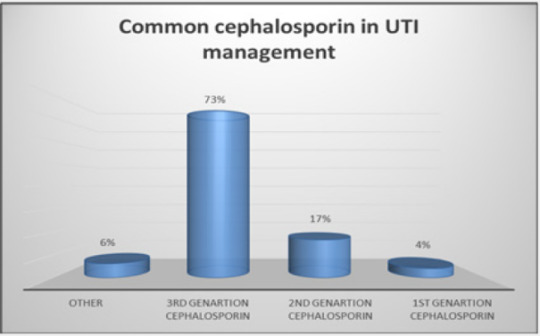
Abstract
Cephalosporins representing a wide variety of β-lactam antibiotics. Cephalosporins have some desirable features, including a convenience of administration, a reasonably broad spectrum of efficacy and a low incidence of toxicity. A descriptive cross-sectional study on the usage of cephalosporin for the treatment of respiratory tract infections (RTI) and urinary tract infections (UTI) was conducted at Ibnsinaa and Alshaab Hospitals in Khartoum state. The data were acquired via questionnaires sent to doctors and community pharmacists, as well as 48 patient files with UTI and RTI diagnoses. SPSS was used to examine the data. The study’s findings indicated that 90% of physicians and pharmacists do not follow cephalosporin prescription and dispensing recommendations. 73% of cephalosporins (3rd generation) are used to treat UTI, whereas 54% of cephalosporins (2nd generation) are used to treat RTI. At conclusion, the findings of this research reveal that the use of cephalosporin in these hospitals is often inconsistent with accepted therapeutic principles. To prevent the emergence of cephalosporin-resistant pathogens, healthcare providers should be cautious when prescribing antibiotics and remain current on recommended antibiotic practices and dosages.
Keywords: Antibiotics; Cephalosporin; UTI; RTI; Infections; Sudan
Introduction
Infectious diseases were a major cause of morbidity and death before to the turn of the twentieth century. Even in the industrialized world, the average life expectancy at birth for men and women was 46 and 48 years, respectively. Plaque, diphtheria, smallpox, pneumonia, cholera, typhoid fever, syphilis, tuberculosis, typhus, and other contagious illnesses were common [1]. Alexander Flemming’s discovery of the first antibiotic (penicillin) in 1928 revolutionized medicine and saved millions of lives [2]. Following the end of Second World War, the golden era of antibiotic discovery began. From the 1950s until the 1970s, dozens new antibiotics were discovered each year, and they revolutionized medicine. Without antibiotics, routine treatments such as open-heart surgery, chemotherapy for cancer patients with compromised immune systems, and organ transplantation would be impossible [3-5]. However, bacteria quickly evolved resistance to antibiotics, and the frequency of infections caused by multidrug-resistant bacteria is growing globally. Since the turn of the twenty-first century, the threat of untreatable diseases has loomed [6,7].
Cephalosporins were not discovered by chance. World War II needs pushed the quest for antibiotics generated by microorganisms [8]. Cephalosporins are antibiotics with a beta-lactam ring that are derived from the Acremonium fungus, commonly known as cephalosporium, this important antibiotic is widely used against bacteria in a variety of serious diseases, including respiratory tract infection (RTI), skin infection, and urinary tract infection (UTI) [9]. Cephalosporins currently come in five generations. With the development of fifth generation cephalosporins, infection management has become even more difficult. However, their use must be strictly limited because if bacteria develop resistance to the fifth generation cephalosporins, infection management will become very difficult [10] Over the last few decades, the rise and spread of beta-lactam resistance in nosocomial Enterobacteriaceae, Acinetobacter baumannii, and Pseudomonas aeruginosa, has become a major global concern. Particularly concerning is the rising resistance to third- and fourth generation cephalosporins [11].
Antibiotics are widely utilized in Sudan, and the majority of hospitals in the country rely heavily on cephalosporin antibiotics, especially in surgical departments, as the preferred option for prophylaxis [12]. Accordingly, the current study aimed to evaluate use of cephalosporin in the treatment of respiratory and urinary tract infections in two Sudanese hospitals (Ibnsinaa and Alshaab Hospitals).
Methodology
Study design
This study used a descriptive cross-sectional survey to confirm and/or refute assumptions about the attitudes of health professionals in two hospitals in Khartoum that treat patients with UTI and RTI with cephalosporins, as well as to evaluate the results in order to comprehend and resolve the study’s issue.
Study area
The study took place in two hospitals in Khartoum, Sudan’s capital: Ibnsinaa and Alshaab Hospitals in the state of Khartoum.
Study duration
Two months, between May and July 2018, the surveys were performed utilizing a questionnaire to gather data.
Data collection
The sample size was chosen to be 96 prior to completing the survey. The questionnaire was anonymous. It elicited data on cephalosporins administered for UTI and RTI under treatment recommendations, the Protocol for Dispensing Cephalosporin, the Mode of Prescription, the Common Cephalosporin Used to Manage UTI and RTI, and Counseling Patients About Drugs.
Ethical approval statement
The research used a cross-sectional design. The study protocol was authorized by the ethical committee at Alneelain University’s Faculty of Pharmacy in Khartoum, Sudan, in accordance with the Helsinki Declaration for the conduct of human experimentation. Each participant completed an informed permission form after receiving a thorough verbal summary of the process.
Statistical analysis
The statistical analyses were performed, classified, and analyzed using SPSS. The descriptive data and results were presented using tables and figures. To compare and correlate variables, the chi-square test was utilized.
Results and Discussion
Cross-sectional studies often enable researchers to gather a large amount of data fast. Self-report questionnaires are often used to acquire data affordably. However, causal correlations might be difficult to deduce from cross-sectional data [13].
According to our current study, numerous significant facts were discovered throughout the present cross-sectional investigation. As seen in (Table 1), the protocol for treating RTI and UTI infections at the respective institutions which should be followed by healthcare providers. Clinical guidelines are gaining popularity as a tool for clinicians to use to influence their practice. No guideline, however, can be sufficiently detailed to apply to all clinical circumstances [14].
Additionally, 90 % of healthcare personnel (physicians and pharmacists) at these two hospitals do not adhere to cephalosporin prescription and dispensing guidelines (Table 2). These intriguing results highlight a global concern, especially in developing countries where antibiotic stewardship is poor. Regretfully, the irrational use of antibiotics in Sudan is well-documented [15,16]. According to previously published data, even developing countries with a better health situation than Sudan, a significant amount of antibiotics is provided without a prescription, and a large percentage of antibiotics supplied are unsuitable for the illnesses being treated [17]. The WHO acknowledged irrational antibiotic usage as a significant role in the development of antimicrobial resistance in its two publications, ‘Global Strategy for Antimicrobial Resistance Containment’ and ‘The Pursuit of Responsible Medicines’ and therefore, health authorities in developing countries should tackle this concern [18].
In our study, as shown in (Figure 1-3), 90 % of healthcare providers at these hospitals did not follow specific manner in prescription of cephalosporins for UTI and RTI patients. 4% of participants prescribed first generation cephalosporins, 17% prescribed second generation, 73% prescribed third generation, and 6% prescribed other antibiotics, as shown in Figure 2 & 3. As a result, the third-generation cephalosporin is the most often used antibiotic to treat urinary tract infections. Additionally, our survey found that 6% of respondents prescribed the first generation of cephalosporins to control RTI infections, 54% used the second generation, 31% used the third generation, and 8% used others, as shown in Figure 2 & 3. As a result, we discovered that second generation cephalosporins are effective in treating RTI infections in our investigation.
Numerous clinics worldwide give cephalosporins to patients in excess of what is necessary and with an excess of extravagance that borders on abuse, necessitating medical monitoring and control to prevent the establishment of anti-cephalosporin infections [19,20]. Fortunately, several institutions have recognized the negative repercussions and created control procedures aimed at possibly limiting antibiotic usage and abuse [21]. These control strategies must be implemented as soon as possible in developing countries such as Sudan, since some countries have reported infections and the rise of cephalosporin-resistant pathogens. For instance, Acinetobacter baumannii strains was detected highly resistant to cephalosporins and β-lactamases in Syria [22], In the United Kingdom, Enterobacter cloacae reported resistant to third generation cephalosporins [23], and Klebsiella infection which was found resistant to late-generation cephalosporins in a nosocomial outbreak in the United States [24]. Finally, Effective antibiotic resistance prevention strategies are available and should be adopted aggressively in critical care units. These strategies fall into three categories: nonpharmacologic infection control, antibiotic management and increasing existing efforts to avoid antibacterial resistance, particularly given the expected future scarcity of novel antibacterial medication classes [25].
To Know More About Novel Approaches in Drug Designing & Development
Please click on: https://juniperpublishers.com/napdd/index.php
For more Open Access Journals in Juniper Publishers
please click on: https://juniperpublishers.com/index.php
#antibiotic discovery#beta-lactam resistance#cephalosporin-resistant pathogens#chemotherapy#juniper publishers#open acess journals#drug development
1 note
·
View note
Text
Behaviour-Education-Technology-Juniper Publishers
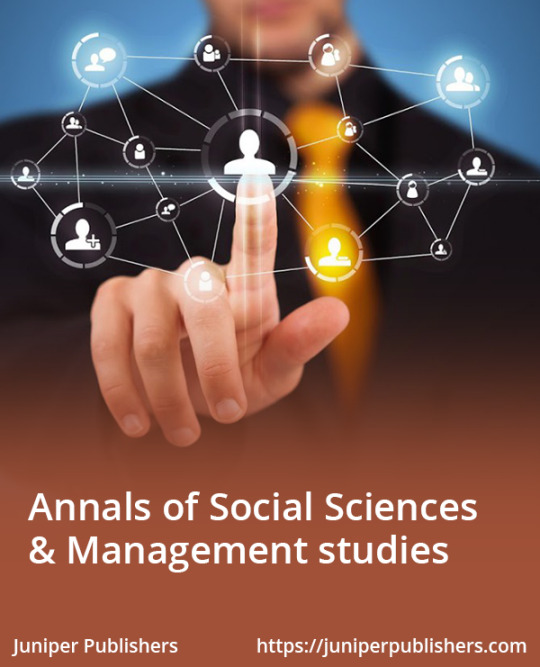
Education can really benefit from the many opportunities, although not always immediate and explicit, that technology makes available. Let’s consider the following example. The use of the Internet has determined, among others, the redefinition of the methods of creation and access to teaching and learning resources, of the physical spaces in which the education takes place, of the frequency and type of interaction between learners and teachers.
It is a phase of the education’s lifecycle that is neither stoppable nor preventable. We could consider that as a phase of renewal that can further enhance the whole educational process. In other words, new and interesting opportunities are opening for redefinition of educational models. Although the path of “educational evolution” has already begun, there is a lot of potential yet to be explored. As it’s well known, technology offers a wide range of opportunities but, ultimately, Universities and Schools are responsible for organizing themselves to manage and coordinate this educational evolution path.
In the managerial discipline the adoption of educational models that make use of experiments and, more generally, experiential learning models do not represent a novelty per se. Technology today has increased the value of these models for educational purposes. Leveraging on continuous feedback on their behaviors, students can verify their learning progress. The integration of behavioral analysis in economic disciplines is also consistent with the concept of “evidence-based economics” recently proposed by Nobel laureate Richard Thaler, according to which the use of descriptive models, through which to analyze the behavior of human beings, would help to increase the value of economic models.
https://juniperpublishers.com/asm/ASM.MS.ID.555580.php
For More Articles in Annals of Social Sciences & Management studies Please Click on: https://juniperpublishers.com/asm/index.php For More Open Access Journals In Juniper Publishers Please click on: https://juniperpublishers.com/index.php
For more queries Juniper publishers please click on: https://www.quora.com/Is-Juniper-Publisher-a-good-journal-to-publish-my-paper
0 notes
Text
Neoscytalidium Dimidiatum: An Emerging Threat in Global Warmth Era_ Crimson Publishers
Neoscytalidium Dimidiatum: An Emerging Threat in Global Warmth Era by Pakdaman BS In Journal of Biotechnology & Bioresearch
Abstract
Global warmth as a universal disaster threatens the biodiversity on the earth via its direct devastative impact (fires, floods, and storms) as well as through its stressful impact on the physiology of living organisms. Consequently, some of thermophilic pathogens will get the opportunity to exert their harmful influences on the life of plants, animals and human. The increased incidence of the diseases caused by the thermophilic fungus, Neoscytalidium dimidiatum is just one of the biological impacts of global warmth that would annihilate the important woods and affect crop production. The fungus is also pathogenic on humans. The windborne arthrospores of the fungus will be easily disseminated by air currents and the rate of infections will rise. This article considers the real facts and suggests realistic opinions for the management of the disease.
For more open access journals in Crimson Publishers please click on: https://crimsonpublishers.com/jbb/
Read more articles in our site: https://crimsonpublishers.com/jbb/index.php
#agricultural#biotechnology#food#plant biotechnology#biotechnology open acess journal#biology#nanoparticles
0 notes
Text
Must-Read SWOT Analysis of Open Access Journals That Technology Watch Specialists Shouldn't Ignore
Introduction Open access journals are becoming increasingly popular as an alternative to traditional publishing methods . But, with new technologies come new risks and potential threats that must be taken into consideration. In this article, we'll explore five emerging threats [...] https://is.gd/D5GaWH

#business #communication #data #education #ict #information #intelligence #technology - Created by David Donisa from Academypedia.info
#are open access journals bad#bronze open access#delayed open access journal#diamond open access#directory of open access books#doab#doaj directory of open access journal#examples of threats in a swot analysis#gold open access#green open access#hybrid open access#open access database#open access examples#open access models#open access resources#open acess disadvantages#peer review process of open access journal#peer review process steps#platinum open access#post-publication peer review#pre-publication peer review#predatory journals and publishers#scienceopen#self-publication peer review#stop predatory journals#swot analysis of open access journal#swot analysis opportunities examples for students#swot analysis strength#swot analysis target#types of open access
0 notes
Note
I wanna say thank you for knocking some sense into me. I've been struggling with the after affects of a toxic friend group that consisted of 7 girls who all were proclaimed 'nymphets' after a while they roped me in their mindset and it kinda went downhill from there. I never wanted to turn out like this and what you said really kinda opened my eyes to the really morbid and disgusting reality that is this 'nymphet' community. I want to get better after this realization I really do but I have no clue where to start because I want to be able to enjoy the community around the book and the movies (even if they were poorly told) ((Dolores was a ton boy not some girly girl in dresses or skimpy clothes)) I think im going to talk to my therapist when we meet in 1-2 weeks but until then do you have any advice on how I can heal?
First of all I think you should stay away from the movies.

These are not "poorly told". They are intentionally softcore CSEM (child sexual explotation material).
Sue Lyon was just just TWELVE when she was casted.
And for Lolita 1997:



You are literally posting stills of softcore CSEM. You are posting stills of CHILD PORNOGRAPHY, and talking how much you want that to happen to you. The producers/directors literally wanted to make CSEM and had to restrain himself just a tiny little bit because anti CSEM laws.
Did you know Menarche has gotten lower in the last years, right? Female puberty starts at around 8 years old, Humbert nowadays would want to rape 8 year old girls.

This is what Humbert speaks of when he talks of Nymphets.

Humbert is attracted to early breast development (8 to 12 years), to menarche (8 to 13), early armpit hair and so on.
When Dolores has the normal body development of a 13 year old in the 1940's, he calls it advanced age and begins to get tired of her. Do you know why? Because he is fixated on 1920's european little girls who were stressed and starved during WW2.

Vladimir Nabokov's Lolita. Part 1, Chapter 5.

Anarchy: A journal of DESIRE ARMED (Issue #19, May-July 1989, "Save the children" by Richard Walters), a pro CSA publication, WHICH ARGUED FOR EVEN THE SEXUAL ABUSE OF NEWBORNS.
When you like Humbert, this is what you like. You can trace back ALL of his arguments to actual real life pro contact pedohebephiles. Is that what you want?

When you see this, do you call her a "nymphet"? You should, since you believe they are real. This is what Humbert thinks is a "demon child", not this

When you post stills of poor Sue Lyon, do you stop to think this child had her life ruined and was raped on set? When you post Dominique Swain, do you think about how she said the role ruined her life?

When you think of your handsome Humbert Humbert, do you think of this? How he calls himself foul smelling? How he calls himself hairy, with aging ape eyes?
And above all, do you think of people like me, who had the "fortune" to be what you want to be when we were as young as 2, 3, 5, 10 year old? Do you think of incest victims? Did you ever think of the fact Dolores was being raped by her dad?
When you think of calling yourself Lolita,nymphet, do you ever think of the CSEM forum "Lolita City", the ages shown here, of all these girls whose rape was filmed? If you wanted to be "Lolita" or a nymphet so bad, why weren't you going out of your way to do this to yourself? I am sure you would find a Humbert there!

Or better: Don't.
Do you remember how Humbert married poor Charlotte and then killed her to gain acess to little Lola? Well, I do.
Do you know who Peter Scully is?
He is currently serving a life sentence in the Philippines for trafficking, child pornography, the murder of a 12-year-old girl, and the torture and sexual abuse of at least eight girls, including a 1-and-a-half-year-old girl.
He is the author of the infamous Daisy's dest...do I even have to say it?
And was the owner of Hurt2TheCore, a snuff/pedosadism csem page. He is also accused of creating the pedosadist and murder and torture international net No Limits Fun.
Anyways, why the mention of him and of Hurt2TheCore? Well, of course, here is the people who post there:

Oh, yes, Humbert in real life. Is this what you want?
Stay away from the movies and go back to the novel. Get into the musical. Read analysis of the book. Go read books about CSEM forums. Memoirs of real life incest victims. of rape victims. That's how you "enjoy" Lolita.
And from a real Life Lolita to you, a wannabe, I hope the world NEVER teaches you what being Dolores Haze in real life is like.
14 notes
·
View notes
Note
No problem, thank you so much Red! I really dont mind longer posts, but does take a bit longer for me to write up my reply in turn.
I was also the same until quite recently! I didnt know it wasnt an alias for a long time! Iirc it might be confirmed in dlc content, and I haven't yet read all of the journals that were added then.
I felt a little weird about that post, as I don't like harshly criticizing what others do in their fics (the only way I might step in is if a fic is written by an openly cis/straight person writing a trans character in an obviously transphobic way and was open to criticism too. I know I'm unfortunately not going to get through to bigots/dont want to waste my time tbh)
I'm not super strongly opionated on it either. I generally hc higgs as trans masc, but Im open to trans fem and other headcanon/interpretations too ( less so of cis higgs, its just not as interesting to me)
With that in mind, higgs would likely not have been named something as masculine as "peter" and in that case would have a different name thats likely his deadname. If we're talking transfem higgs, then "peter" could be considered a deadname for sure.
Higgs and peter both being names/aliases that he readily uses feels more in line with kojimas previous games like mgs, where he does this a bit. A character will have several names that they will go by, depending on the circumstances and time period, but to close loved ones they share a true name with, usually a first name. I usually use Higgs more frequently too, partly to not spoil newcommers to fandom on the suprise twist, if they havent played the game yet. Both feel like equally his name to me. The only uncertainty i have is that he may not in fact use "englert", because it has far more baggage depending on who from his family he got it from.
The majority of fic writers ive seen that use peter englert for higgs are either doing an au where the events that make him higgs haven't/didn't happen yet, or its a post DS au where he is rehabilitated, and using it so the UCA/regular people don't recognize that its him, so that. He can live in relative anonymity then after his crimes, and without the burden of them affecting new connections he might make.
(Personally I havent finished the book yet, but it does makes some strange divergences from the game? Like cutting out entire cutscenes that happen and making higgs really irationally angry all the time? Its very off for a novelization of a modern videogame where major parts of the story are far more acessible than like 60+ year old novels of tv and movies. I'm taking anything it with a heavy grain of salt, and just letting it add to the story if there's something that interests me and doesnt entirely contradict the game)
It’s alright! Honestly I’m in a similar boat to you, generally I prefer to HC Higgs as trans too because it feels quite fitting to me, although I’ll also swing between that and him being cis so yeah the deadnaming thing again depends on how the writer views him, but I wasn’t aware that Kojima sometimes gives characters several names in that manner as well, so thank you for that! It definitely solidifies my interpretation of the usage of his names a bit more, but the redemption fics/AUs that call him Peter make a lot of sense and I quite like those interpretations too.
5 notes
·
View notes
Text
Yes, it is definitely ok to ask an academic to send you one of their articles if you have trouble accessing it, and such requests are often appreciated! We want our work to be read and to have an impact, and the money from the paywalls many articles are behind goes to the publishers - we don't earn anything from it.
(Paywalled academic publishing is such a grift. The income of academics generally comes from the universities and other research institutions we work at, as well as from grants obtained for research projects. Much of this money ultimately comes from the public. When we publish our research with an academic publisher, the publisher does not pay for it, sometimes the academic even has to pay to cover the publication costs. Before the work is published, the publisher gets other academics to peer-review it, and the publisher doesn't pay these reviewers either. Then, when the work is published, the publisher puts it behind a paywall. The universities/other research institutions, the grant bodies, the members of the public etc., who actually fund this research, then have to pay the publisher to access it. And academics have long gone along with this as publishing in a prestigious journal has been key to career advancement, and the prestigious journals have been paywalled. Thankfully, there is now a move towards open acess publishing in academia, for instance with many funding bodies requiring that the research they fund is open access, but there is still way too much that is published behind paywalls. In other words, academics have nothing to gain from their work being behind these paywalls and most hate them at least as much as you do.)
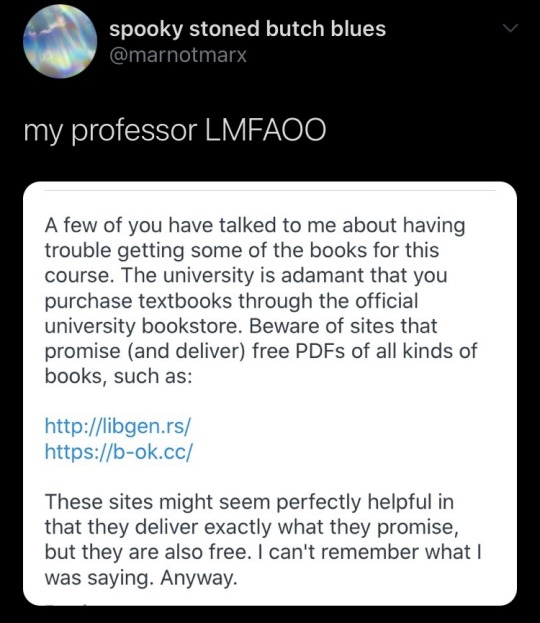
Beware!
316K notes
·
View notes
Text
Enhancing Academic Discourse: International Journal of Multidisciplinary Research & Reviews
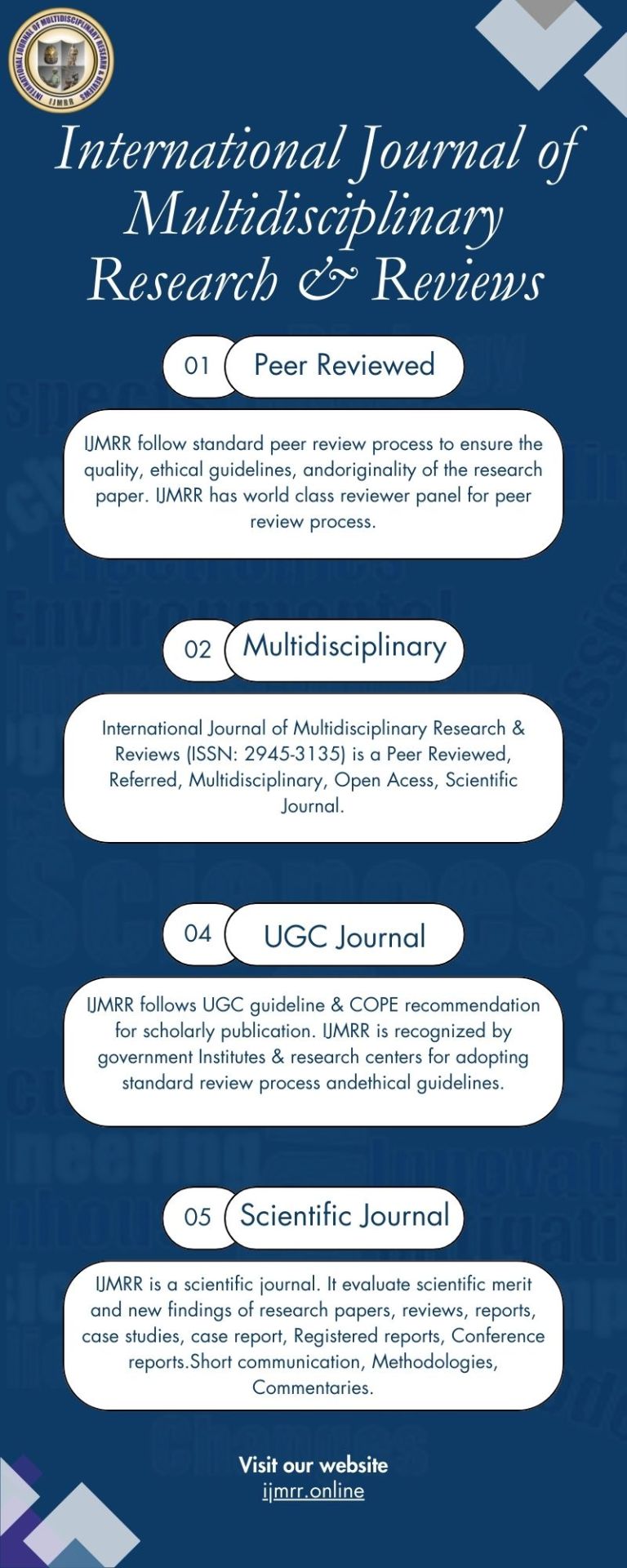
International Journal of Multidisciplinary Research & Reviews (ISSN: 2945-3135) is a Peer Reviewed, Referred, Multidisciplinary, Open Acess, ScientificJournal . IJMRR brings out quarterly publication i.e. four issues in a year. The journal adheres ethical guidelines recommended by Committee on Publication Ethics (COPE) and University Grant Commission (UGC).
0 notes
Text
Awareness about Liver Cancer in Biotechnology Students_Crimson Publishers
Awareness about Liver Cancer in Biotechnology Students by Muhammad Imran Qadir in Novel Approaches in Cancer Study
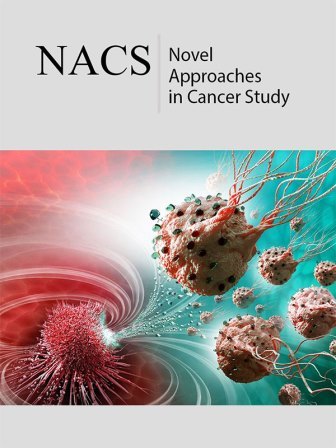
Liver cancer is a major disease caused by sudden mutation occurred in the genes. To cure this disease gemcitabine seems to be affective. Gemcitabine is anticancer agent that has profile containing mild toxicity. It seems to be affective in solid tumors. To check its effectiveness, a questionnaire was developed and the awareness about liver cancer is checked in the post graduate students. All the students were fully aware of this disease.
1 note
·
View note
Text
Comparative study on some in vitro biological activities of freeze-dried leaves extracts of six advanced accessions of Ipomoea batatas (L.) Lam
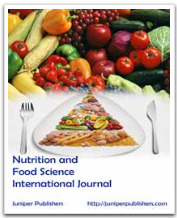
Abstract
Sweet potatoes (Ipomoea batatas L.) are an excellent source of bio-active phytochemicals. In recent years, polyphenols and other naturally occurring compounds have become essential research targets for non-insulin-dependent diabetes. Precisely, substances and plant extracts that occur readily have been checked for α-glucosidase (AGH) enzyme inhibition. This study investigated the anti-diabetic, antimutagenicity, and antioxidant activity from sweet potato leaves in vitro. The anti-diabetic activities were tested using the enzyme –α-glucosidase obtained from the rat intestine using the p-nitrophenyl-α-D-glucopyranoside (PNP-G) substrate for inhibitory activities. The α-glucosidase inhibition assay evaluated the anti-diabetic activity, and the extract showed a considerable α-glucosidase inhibitory activity. Among the genotypes, AN-6 exhibited the highest a-glucoside inhibitory activity, followed by AN-4, and AN-2. The leaf extract showed the inhibitory activity ranging from 22.33% to 74.98 on a-glucosidase from 10 to 1000 mg/ml, which was increased steadily with increasing sample concentrations. The antimutagenicity in the leaves explored using the Salmonella typhimurium TA 98. The Ipomoea batatas genotypes effectively decreased the reverse mutation induced by Trp-P-1, and the mutagenic activities were dose-dependent. Furthermore, the extract also capable of reducing the reverse mutation persuaded by Trp-P-2, IQ, and DEGB extract of grilled beef. The AN-6 showed higher antimutagenicity followed by AN-5 at 100 μL concentrations. The fallouts demonstrate that antioxidant capacity (4.42 to 10.98 μmole Trolox g-1 DW) and total phenolic contents (7.68 to 16.96 μmole TA. g-1 DW) broadly fluctuate among the genotypes. Our data demonstrate that all the genotypes have the physiological functions studied, and AN-6 and AN-4 exhibited the highest activities. The sweet potato leaves extract showed a more potent inhibitory activity for all the physiological functions studied, which might have values in anticipation of certain human health conditions.
Keywords: Antioxidant; Polyphenol; Anti-diabetic activity; Antimutagenicity; Sweet potato tops
Introduction
Sweet potato (Ipomoea batatas L. Lam) is the sixth most important food crop in the world, and new uses for this crop have been identified [1]. It is one of the diversified crops supplying vitamins and minerals such as vitamin A, B, C, beta-carotene, iron, calcium, zinc, protein and has high energy [2]. Fresh leaves contain vitamin A on an average of 1600 IU 100g-1 [3]. Leaves are very nutritious compared to leaves of cassava, amaranth, mushrooms, taro and pumpkin [4]. It is also one of the plants selected by the US National Aeronautics and Space Administration to be grown in a controlled ecological life support system as a primary food source [5]. Recent studies show that it contains bio-active compounds as polyphenols, anthocyanins, flavonoids, dietary fiber, etc., which are essential for human health. Sweet poato storage roots are a source of carbohydrates, while its leaves and green stems contain nutritional compounds in higher than many commercial vegetables [6-8]. Sweet potato leaves are cooked as vegetables in different locations of the world. The eating of Ipomoea batatas L. leaves as a vegetable in many parts of the world indicates that they are acceptable as edible like other traditional leafy vegetables. They are rich in phytonutrients and are further tolerant of diseases and pests than many other green plants [9-12]. Phytonutrients act as bioactive composites and a diverse group of secondary metabolites commonly present in higher plants [7,13-19]. They play important roles and contribute to the structure of the plants and complicated by a significant number of metabolic pathways [20,21]. Thus, the phenolic plant complexes, because of their diversity and widespread distribution, are the most exceptional talented group of natural antioxidants and add to the organoleptic and nutritional qualities of fruit and vegetables.
Diabetes mellitus is a common disease with many complications, such as atherosclerosis, cardiac dysfunction, retinopathy, neuropathy, and nephropathy [22]. α-glucosidase (EC 3.2.1.20) catalyzes the final step in the digestive process of carbohydrates. Its inhibitors can retard the uptake of dietary carbohydrates and suppress postprandial hyperglycemia and could be useful for treating diabetic and obese patients [23]. α-Glucosidase inhibitors such as acarbose, miglitol, and voglibose are known to reduce postprandial hyperglycemia primarily by interfering with the carbohydrate digestive enzymes and by delaying glucose absorption. Free radicals can lead to a variety of physiological and biochemical lesions [24] and induce degenerative diseases such as coronary disease, diabetes, stroke, and cancer [25]. The new expansion of screening approaches for environmental carcinogens by determining their mutagenicity has allowed detecting numerous types of mutagens and carcinogens in foods [2,24-27]. On the other hand, it is now recognized that several types of inhibitors act against mutagens and carcinogens in food. They show a substantial part in plummeting the dangers of mutagenesis and carcinogenesis [28]. Several authors described that the nutritive constituents of sweet potato tops are comparable to those of commercial leafy vegetables [2,6,14-18,26,29-30]. However, the physiological function of sweet potato leaves has not yet been deliberate synthetically. In the current article, the effects of the extracts of the selected sweet potato accessions with the diverse polyphenolic levels on the antidiabetic activity, mutagenicity, and antioxidant capacity are explored.
Materials and Methods
The leaves from six Ipomoea batatas L. (sweet potato) advanced accessions, namely AN-1, AN-2, AN-3., AN-3, AN-4, AN- 5, and AN-6, were used for this study. Sweet potato roots were planted 2 inches deep and about 2 inches apart (density of 5 cm x 5 cm) in a greenhouse and field conditions in late February (greenhouse) to March/April in the University of Arkansas at Pine Bluff’s Agricultural Research Farm, Pine Bluff, AR. After two months, tips were harvested every 10-15 days. Chemical fertilizer (N: P: K = 8: 8: 8) was used at a rate of 500 lbs/acre, and compost was used at a rate of 8000lbs/acre in volume. After each harvest, 150 lbs/acre of ammonium sulfate was applied as additional fertilizer. After harvest, the leaves were washed softly, moved into pre-labeled separate vinyl bags, and directly frozen at -85 ℃. The next day all the frozen samples were freeze-dried for 48 h in a freeze dryer. The freeze-dried samples were ground in a blender and used for laboratory analysis. The extract was prepared from the lyophilized flour (1g) using 20 mL of ice-cold water for 1h. The suspension was centrifuged at 18000 x g for 20 min, and the resultant precipitate was re-extracted under the same conditions. The collected supernatant was lyophilized and used for analysis.
α-Glucosidase inhibitory assay
The α-Glucosidase inhibitory assay was performed according to a slightly modified method described by Islam [31]. One hundred microliters of 3 mM pNPG in 0.2 M sodium phosphate buffer (pH 6.8) was added as a substrate to the mixture of 50 μl of α-glucosidase (0.15 unit/ml) and 50 μl of sample to start the reaction. The reaction was conducted at 37 ℃ for 15 min and stopped by the addition of 750 μl of 0.1 M Na2CO3. The α-Glucosidase activity assessed by measuring the release of p-nitrophenol from pNPG at 405 nm. Acarbose used as a positive control. All tests were performed in independent triplicate (n=3), and data were expressed as mean ± SD.
Extraction and Measurement of Total Phenolic
The total phenolic contents of the extracts were measured according to a slightly modified method described by Islam et al. [18]. The lyophilized sweet potato leaf extract was forcefully mixed with ten times its equivalent volume of 80% ethanol. The mixture was boiled for 5 min and centrifuged at 5000g for 10 min, and the supernatant was composed. The residue was mixed with an additional 80% ethanol and boiled for 10 min to re-extract the phenolic and centrifuged under similar conditions. The extracts were pooled and made up to 10 mL and used for to quantity of total phenolic. The alcohol extract was diluted to achieve an absorbance reading at the range of the standard tannic acid (TE). The results were stated as μmol TE g-1 DW (dry weight).
Antioxidant capacity in the DPPH assay
The radical-scavenging activity of the extracts was measured according to a slightly modified method described by Islam et al. [17]. A stock solution of DPPH (6 mM) was prepared by dissolving 0.0263g in 10 ml of ethanol (or methanol). The stock solution is diluted to develop a 60 μM working solution. Again, a ten mM stock solution of Trolox was ready for every sample tested. Dilutions were made for each sample tested. Dilution strength was dependent upon each extract’s relative antioxidant capacity. For each dilution, 20 μL were added to 2.5ml of DPPH solution and incubated in a dry bath at 37 ˚C for 30 min. Absorbances were measured at 520 nm on an ASYS UVM 340 plate reader. TEAC values were measured by comparing the slope of sample plots to the slope of Trolox. Antioxidant activity was reported as μmoles Trolox equivalent per gram dry weight sample (μmol TE/g DW).
Assay of antimutagenicity
The antimutagenicity assay was performed as described in earlier papers [27]. The antimutagenic activity was assessed for Salmonella typhimurium TA 98 using a mutagen, Trp-P-1. These mutagens need metabolic activation to induce mutation in TA 98. The s-9 mix containing 50 μmol of sodium phosphate buffer (pH 7.4), 4 μmol of MgCl2, 16.5 μmol of KCl, 2.5 μmol of glucose-6- phosphate, two μmole of NADH, 2 μmol of NADPH, and 50 μL of the S-9 fraction in a total volume of 0.5 mL. For the inhibition test, 0.1 mL of mutagen, 0.1 mL DMSO-dissolved polyphenolics solution, and 0.5 mL of S-9 mix or phosphate buffer were concurrently incubated with 0.1 mL of a bacterial suspension at 37 ℃ for 20 min and then dispensed into minimal-glucose-agar plates with 2 mL of soft agar. The colony number of each dish was accounted after 48 h cultivation at 37 ℃.
Statistical analysis
A randomized complete block design with three replications was adopted. Data for the different parameters were analyzed by analysis of variance (ANOVA) procedure, and the level of significance was calculated from the F value of ANOVA.
Results and Discussion
α-Glucosidase inhibitory effect
The α-glucosidase inhibition assay evaluated the antidiabetic activity, and the extract showed a considerable α-glucosidase inhibitory activity (Table 1). The leaf extract demonstrated a moderate to high inhibitory activity on α-glucosidase, among the genotypes, AN-6 (80% inhibition at 1000 μg/ml) exhibited the highest a-glucoside inhibitory activity, followed by AN-4 (75% inhibition at 1000 μg/ml) and AN-2 (80% inhibition at 1000 μg/ml). The results also suggested that the α-Glucosidase inhibitory effect in the sweet potato tops is dose-dependent (Table 1), and increasing the doses resulted in a higher rate of inhibition percentage. The leaf extract showed the inhibitory activity ranging from 22.33% to 74.98% on a-glucosidase from 10 to 1000 mg/ml, which was increased steadily with increasing sample concentrations. On the other hand, the control treatment (Acarbose) showed 98.01% inhibitory activity at the strength of 0.1 μg/ml.
One therapeutic approach for treating diabetes is to increase postprandial hyperglycemia. This is done by retarding the absorption of glucose through the inhibition of the carbohydrate hydrolyzing enzyme α-glucosidase in the digestive tract. Inhibitors of these enzymes delay carbohydrate digestion, causing a reduction in the rate of glucose absorption and consequently blunting the postprandial plasma glucose rise (Rhabasa and Chiasson, 2004) [32]. The results suggest that the Ipomoea batatas leaf extracts have the potentiality for treating diabetes by inhibiting α-glucosidase activity.
Total polyphenol content and antioxidant capacity
The antioxidant capacity (μmole Trolox/mg dry leaf powder) and total polyphenol (μmol TE g-1 DW) in the leaves of three genotypes are presented in Table 2. The genotypes fluctuated extensively in their total polyphenolic contents. The highest total phenolic found was 16.98 μmol TE g-1 DW, and the lowest was 7.68 μmol TE g-1 DW. The accessions AN-6 had higher content (16.98 μmol Trolox.g-1 DW) flowed by AN-4 (16.52 μmol Trolox.g-1 DW), and AN-5 (15.63 μmol Trolox.g-1 DW). The results showed that sweetpotato leaves had higher or similar content of total polyphenolics than other vegetables [12,17-18,21,29]. The data also suggested that there was a positive correlation between polyphenol contents and antioxidant activity. Because the accessions higher in total phenol contents also exhibited higher antioxidant activity. The above results also agree with the observations of Islam [6], where he added that sweet potato leaves, could serve as a new leafy vegetable. Acceptable tops should be tender, glabrous, and purplish. Those eating tops prefer the top 10 cm of tips, including both stem and leaves. Heads with the most significant number of leaves with petioles less than 4/10 of 1cm long are considered desirable because they are tender and suitable for vegetables. Petiole length varies widely with genotype and may range from approximately 10 to 40 cm [33]. (Table 2)
The antioxidant capacity of the genotypes ranges from 4.42 to 10.98 μmol Trolox g-1 DW. The accessions AN-4 (10.98 μmol Trolox.g-1 DW) had the highest contents of phenolic, followed by AN-6 (10.69 μmol Trolox.g-1 DW). The accessions AN-1 showed the lowest (4.42 μmol Trolox.g-1 DW) antioxidant activity followed by AN-2 (5.75 μmol Trolox.g-1 DW). The phenolic is pervasive bioactive compounds found in plant foods and beverages. The polyphenolic compounds show numerous biological functions, sweet potato leaves might also be expected to have physiologically active possessions because they comprise higher contents phytonutrients. The antioxidative substances contained in plant parts have attracted much consideration all over the world. Several researchers [17,27,34] have reported the radical scavenging and antioxidant activities of sweet potato leaves. The polyphenolics contents and antioxidant activity in sweet potato leaves, other different plants and foods showed a high correlation [6,16,17,26]. Usually, the antioxidant capacity of various plants is influenced by the genetic factor. Therefore, the extent of the antioxidant capacity may be a critical tool for use in plant breeding programs intended to improve antioxidant components available for human consumption. This result will be valuable for some chemical breeding programs to develop needed organoleptic and nutritional quality characteristics of crop plants.
Effects of water extract of leaves on the mutagenicity
The antimutagenic impact of the water extracts from sweet potato leaves of three genotypes were determined by antimutagenicity assays using Trp-P-1 at a dose of 0.075 μg/plate, and using three different doses of the sweet potato leaves extracts such as 100, 50 and 10 μg/plate (Table 3).
The results found that inhibitory activity was higher at higher doses in all genotypes studies. The inhibitory activity (%) ranged from 69 to 94 at 100μg/plate, 68 to 84 at 50μg/plate, and 61 to 73 at ten μg/plate doses. The highest activity found in the accessions AN-6 (90% inhibition at 100 μL) followed by AN-5 (92% inhibition at 100 μL) while AN-2 (80% inhibition at 100 μL) had the lowest. Therefore, the results propose a wide disparity of antimutagenicity among the genotypes, and the extracts showed dose-dependent inhibitory activities. Similar trends were also found by several researchers [6,17,35,36]. The antimutagenic effect of the extract at low doses is relatively minor compared with the one from higher doses. (Table 4)
We also evaluated the antimutagenic activity of the extract using several mutagens, such as Trp-P-2, IQ, B[a] P, and DEGB (Table 4). The DEGB was utilized at a dose of 100 μL/plate without dilution. The s-9 mix was added for the assay using Trp-P-1, Trp-P-2, IQ, B[a] P, and DEGB to cause mutations in TA 98. The extract used in doses of 50, 10, and 5 μL/plate. The extract inhibited Trp-P-2 induced mutation by 14%, IQ by 88%, b[a] P by 27%, and Trp-P-1 by 71%, respectively, at the concentration of 10 μL/plate. Thus, the sweet potato leaf extract effectively decreased the reverse mutations induced by all purified mutagens tested. This study exhibited that Ipomoea batatas L. tops could be an outstanding source of natural active compounds with numerous biological functions with the aptitude to defend in contradiction of certain sorts of human illnesses. We tested several physiological functions of the leaves extracts in six advanced accessions. All the accessions tested accumulated higher physiological functions. The high biological activity in the leaves extracts, which might have values in the prevention of specific human conditions. Therefore, sweet potato leaves can be considered as a potential source of functional food and a pharmaceutical agent. Furthermore, the leaves with high phytonutrient content may be used as herb, tea, food ingredient, and a nutritional supplement that could be demanded to have a positive impact on human health.
To Know More About Nutrition and Food Science International Journal
Please click on: https://juniperpublishers.com/nfsij/index.php
For more Open Access Journals in Juniper Publishers
please click on: https://juniperpublishers.com/index.php
#tomato nutrition#Nutritionist communications#sonic nutrition#chicken nutrition#Juniper Publishers#Juniper publishers USA#open acess journals
0 notes
Note
This isn't the same as English translations of his works, but Jouno Saigiku is referenced several times in Politics of the Meiji Press: The Life of Fukuchi Gen’ichirō, which is available via Open Acess on JSTOR. (They worked together at the newspapers Fukuchi worked at and ran; Tecchou is also mentioned, for his own contributions to Meiji-era journalism.)
Are there any books by Jono that have been translated into English?
I am not aware of any English translations of Jōno Saigiku's work.
#it's very much not what was asked for#but it does help scratch the itch for more hunting dogs#i also appreciate fukuchi so much more as a character for having read about fukuchi the man#fukuchi genichirou
10 notes
·
View notes
Text
Juniper Publishers wishes Happy Easter to you and your family members

1 note
·
View note
Text
Consideration of the Light and Dark Sides of Medicines: The Thalidomide Example_Crimson Publishers
Consideration of the Light and Dark Sides of Medicines: The Thalidomide Example by Fumihiko Hinoshita* in Advancements in Case Studies
It is easy to imagine that the use of medicines, even though primitive, started with the history of human beings. There seems to have been numerous medicines in ancient Egypt [1] thousands of years ago and also in ancient China where there were many kinds of herbal medicines [2,3]. Traces of herbal or medicinal plants, which might have been utilized, were discovered in ancient ruins in various places throughout the world. Similarly, all of the people living in the world with advanced medical and pharmaceutical sciences cannot live without the medicines of today, even though the current medicines are markedly progressed compared with those of the ancient times. In fact, we receive great benefits from a variety of extremely effective drugs.

For more articles in AICS, follow the URL: https://crimsonpublishers.com/aics/ For more articles in Crimson Publishers, follow the URL: https://crimsonpublishers.com/
#Crimson Publishers#Crimsonpublisher#Crimson Publishers LLC.#open acess journals#Peer Review Journals
2 notes
·
View notes
Text
Studies on the Isolation, Characterization and Extra-Cellular Enzymatic Activities of the Pathogen Helminthosporium Oryzae Causing Brown Spot Disease of Rice_ Crimson Publishers
Studies on the Isolation, Characterization and Extra-Cellular Enzymatic Activities of the Pathogen Helminthosporium Oryzae Causing Brown Spot Disease of Rice by Archana U Singh In Journal of Biotechnology & Bioresearch
Abstract
Rice is an important Cereal and staple food for human population. In the present study a major fungal pathogen (Helminthosporium oryzae) causing brown spot disease of Rice was studied. Isolation, Characterization and Extra-cellular enzymatic activities of the pathogen Helminthosporium oryzae was carried out for confirming pathogenic nature of fungus causing Brown Spot Disease of Rice.
For more open access journals in Crimson Publishers please click on: https://crimsonpublishers.com/jbb/
Read more articles in our site: https://crimsonpublishers.com/jbb/index.php
#plant biotechnology#agricultural#crimson biotechnology#food#crimson bioresearch#biotechnology#biotechnology open acess journal
0 notes
Text
What are Open Access Journals and How Can they Help Technology Watch Specialists ?
Introduction As the amount of scientific knowledge published online continues to grow, it can be difficult to know where to look for reliable information . Open access journals are a great way to gain access to credible, up-to-date research in your field of study . [...] https://is.gd/q5YjN9

#business #communication #data #education #ict #information #intelligence #technology - Created by David Donisa from Academypedia.info
#are open access journals bad#bronze open access#delayed open access journal#diamond open access#directory of open access books#doab#doaj directory of open access journal#examples of threats in a swot analysis#gold open access#green open access#hybrid open access#open access database#open access examples#open access models#open access resources#open acess disadvantages#peer review process of open access journal#peer review process steps#platinum open access#post-publication peer review#pre-publication peer review#scienceopen#self-publication peer review#swot analysis opportunities examples for students#types of open access#Open Access Journal#Technology watch
0 notes